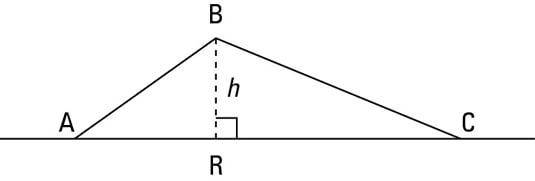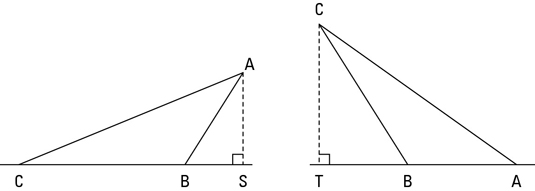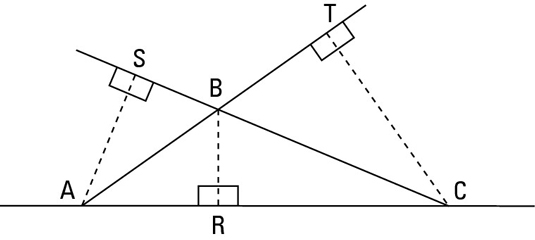The altitude of a triangle is a segment from a vertex of the triangle to the opposite side (or to the extension of the opposite side if necessary) that’s perpendicular to the opposite side; the opposite side is called the base. (You use the definition of altitude in some triangle proofs.)

Imagine that you have a cardboard triangle standing straight up on a table. The altitude of the triangle tells you exactly what you’d expect — the triangle’s height (h) measured from its peak straight down to the table. This height goes down to the base of the triangle that’s flat on the table. The above figure shows you an example of an altitude.
Every triangle has three altitudes, one for each side. The following figure shows the same triangle from the above figure standing up on a table in the other two possible positions: with segment CB as the base and with segment BA as the base.

Every triangle has three altitudes. And you can use any side of a triangle as a base, regardless of whether that side is on the bottom. The following figure shows triangle ABC again with all three of its altitudes.

The following points tell you about the length and location of the altitudes of the different types of triangles:
-
Scalene: None of the altitudes has the same length.
-
Isosceles: Two altitudes have the same length.
-
Equilateral: All three altitudes have the same length.
-
Acute: All three altitudes are inside the triangle.
-
Right: The altitude perpendicular to the hypotenuse is inside the triangle; the other two altitudes are the legs of the triangle (remember this when figuring the area of a right triangle).
-
Obtuse: The altitude connected to the obtuse vertex is inside the triangle, and the two altitudes connected to the acute vertices are outside the triangle.

